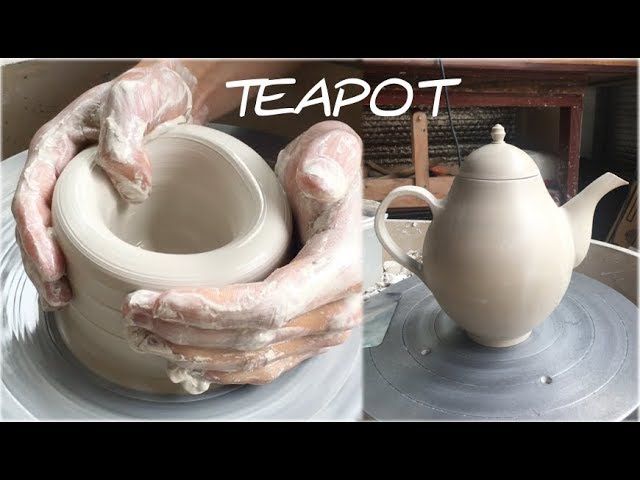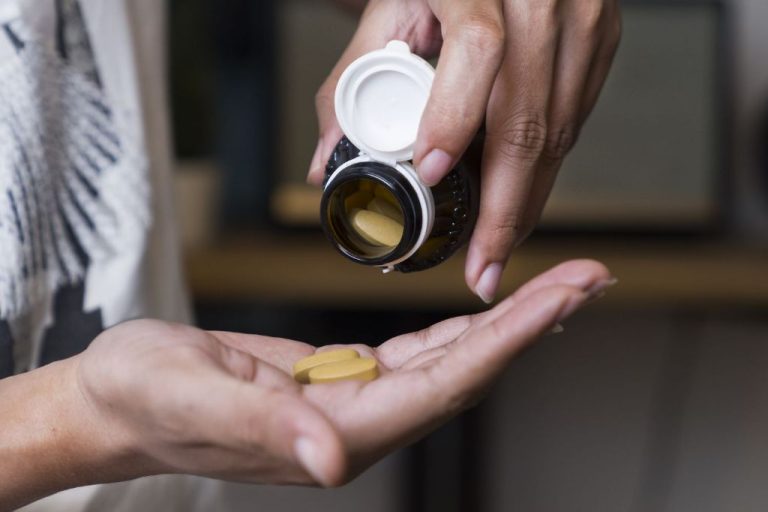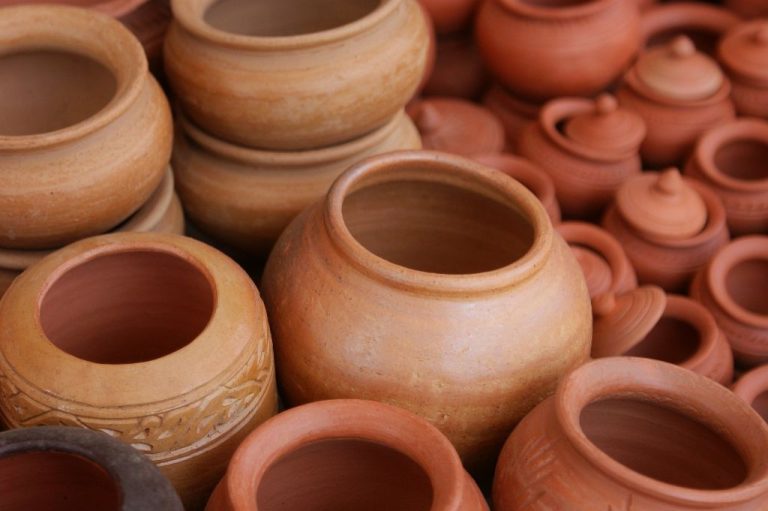What Clay Colors Make Pink?
When working with polymer, air-dry, or any other sculpting clays, learning how to mix new colors by combining the primary clay colors is an important skill. By understanding basic color theory and the color wheel, you can blend and mix clays to create an endless variety of hues and shades. This guide will provide an overview of mixing clay colors, focusing specifically on techniques for creating different shades of pink clay from primary and secondary clay colors. We’ll go over color mixing basics, pink clay recipes, tips for achieving your ideal pink, and how to use pink polymer clay in your projects.
Primary Clay Colors
The primary colors in clay are red, yellow, and blue. These are called primary colors because they cannot be created by mixing other colors. Instead, all other clay colors are derived from some combination of the primaries.
Red, yellow, and blue are considered the root colors in clay and art. Using just these 3 colors, an infinite range of hues can be mixed and blended. This makes primary colors essential for any clay color palette.
Each primary has its own unique pigments and properties:
- Red clay contains iron oxide, giving it a rich, earthy quality.
- Yellow clay is vibrant and warm, with pigments like ochre or iron oxide.
- Blue clay tends to be more subtle and cool in tone, utilizing cobalt or copper pigments.
Understanding the primary triad of red, yellow, and blue is key to intentional color mixing with clay. Mastering these core three allows the clay artist to blend any secondary and tertiary hues needed for their projects.
Secondary Clay Colors
Secondary colors are created by mixing two primary colors. The three secondary clay colors are orange, green, and purple.
Orange is made by mixing red and yellow clay. When blended evenly, red and yellow make a vibrant orange hue. Orange clay is bold and energetic.
Green results from mixing blue and yellow clay. Blue and yellow combine to create a natural, earthy green color. Green clay has a cool, calming effect.
Finally, purple clay is made by mixing red and blue clay. Red and blue make a rich purple shade. Purple clay is often associated with creativity and imagination.
Understanding how to mix secondaries allows artists to achieve more colors. Once you know how to make orange, green, and purple, even more shades become possible by adjusting ratios.
Tertiary Clay Colors
Tertiary colors are made by mixing primary and secondary clay colors together in different combinations. For example:
- Red + Yellow = Orange (secondary)
- Red + Blue = Violet (secondary)
- Orange + Violet = Red-violet (tertiary)
- Yellow + Green = Yellow-green (tertiary)
- Blue + Orange = Blue-orange (tertiary)
So tertiary clay colors are created by taking a primary and a secondary, or two secondary colors, and mixing them together. This gives us a whole range of subtle, nuanced hues between the standard primary and secondary colors on the color wheel. Tertiary colors have more complexity than primary and secondary colors.
Common tertiary clay colors include red-violet, red-orange, yellow-orange, yellow-green, blue-green, blue-violet, and more. Playing around with mixing different primaries and secondaries is a great way to explore the tertiary color spectrum.
Understanding Color Theory
Color theory is a framework for understanding how colors interact with each other. There are three main color schemes that are important to understand when mixing colors:
Complementary Colors
Complementary colors are opposite each other on the color wheel. Common complementary pairs are red & green, blue & orange, and yellow & purple. When complementary colors are mixed, they tone each other down and create more muted, neutral colors.
Analogous Colors
Analogous colors sit next to each other on the color wheel, such as blue, blue-violet, and violet. Using analogous colors creates a monochromatic, harmonious look and feel.
Monochromatic Colors
A monochromatic scheme uses different tones, shades, and tints of a single color. It’s a simple, elegant way to add visual interest by playing with lightness and saturation of the same base color.
Understanding these color relationships helps inform what happens when colors are mixed. With a grasp of color theory, you can better predict and mix the clay colors needed to achieve your desired results.
Mixing to Make Pink
There are many clay color combinations that can produce different shades of pink. Here are some tried and true recipes for mixing pink polymer clay:
Baby Pink:
- Mix 2 parts white clay with 1 part red clay
- Mix translucent clay with a tiny bit of red clay
Dusty Pink:
- Mix 3 parts white clay with 1 part red clay
- Mix translucent clay with a bit more red clay than for baby pink
Salmon Pink:
- Mix 1 part white clay with 1 part reddish orange clay
- Mix translucent clay with orange and red clay
Fuschia Pink:
- Mix translucent clay with a lot of bright red clay
- Mix equal parts translucent clay and neon pink clay
The recipes above are starting points but you can adjust the clay ratios to produce lighter or darker pinks. Test mixes until you achieve the perfect pink for your project!
Light vs. Dark Pink
When mixing clay to create pink, you can easily adjust the recipes to make lighter or darker shades. The main factors that affect the lightness or darkness of pink clay are the ratio of the colors used, the brightness of the base colors, and the amount of white or black added.
To make a lighter pink, you’ll want to increase the amount of white clay used in the recipe. Adding more white will dilute the other colors and give you a softer, paler pink. Using brighter or more saturated base colors like a bright red and bright white will also yield a lighter pink. Decreasing the amount of red, pink, or other core clay color will make the resulting mix lighter as well.
For a darker, bolder pink, add more of the red, pink or other core clay color and less white. Using darker base clays like burgundy and gray will result in a darker pink. You can also add a small amount of black clay, which will mute the pink into a dusty mauve or dusky rose color.
Keep in mind the properties of the clay when adjusting color. Some clays like polymer clay become darker and less vibrant when baked. So a light pink polymer clay may turn dark once cured in the oven. Testing mixes and recording recipes is key to learning how to adjust the clay colors.
Pink Clay Recipes
There are many recipes for mixing clays to achieve different shades of pink. Here are some of the most common ratios:
Light Pink
For a pale, blush pink:
- Mix 3 parts white clay with 1 part red clay
- Mix 5 parts white clay with 1 part pink clay
Medium Pink
For a vibrant rose pink:
- Mix 1 part white clay with 1 part red clay
- Mix 3 parts peach clay with 1 part red clay
Dark Pink
For a rich, deep pink:
- Mix 3 parts red clay with 1 part white clay
- Mix 1 part burgundy clay with 1 part white clay
The specific brands and types of clay used will affect the final color. Test mixes on a tile first before using in a project.
Tips for Mixing Pink Clay
When mixing clay to achieve a pink color, there are some techniques and tools that can help you get the perfect shade. Here are some tips for mixing pink clay successfully:
Knead thoroughly – After adding colorants to your clay, knead the mixture thoroughly to ensure the color distributes evenly throughout. Keep kneading until the color looks uniform with no streaks. The warmth from your hands will also help blend the colors.
Condition clay beforehand – For best results, start with clay that is already conditioned and pliable. Stiff clay will not accept colorants as readily. Use clay softeners or a clay conditioning machine if needed.
Use a palette knife – A palette knife is useful for folding colorants into the clay mixture evenly. The thin, flexible blade allows you to thoroughly incorporate the pigments.
Work in small batches – Mixing small amounts of clay at a time gives you greater control over the color. Larger batches can become difficult to evenly blend.
Take your time – Rushing the mixing process can lead to uneven coloring. Take your time kneading to achieve a smooth, consistent pink shade.
Photograph batches – Photograph each clay color mixture you create and write down the recipe. This helps you replicate shades later on.
Let clay rest – After mixing in colorants, wrap the clay in plastic and let it rest for at least 24 hours. This allows the colors to fully permeate the clay.
Using Pink Clay in Projects
Pink clay can add a fun pop of color to many different kinds of art projects. Here are some ideas for incorporating pink clay into your pottery, sculpture, and other artwork:
For pottery:
- Make cups, mugs, bowls, or vases with a pink exterior glaze
- Create pink clay handles or feet for neutral-colored pots
- Make pink clay beads, buttons, or decorative embellishments to attach to pots
- Make a pink clay pot and use white glaze to paint delicate designs
- Make pots with pink and white swirled clay for a marble effect
For sculpture:
- Sculpt miniature pink flowers, fruits, animals, or figurines
- Make pink balloons, ribbons, or confetti for a party-themed sculpture
- Sculpt pink butterflies, ladybugs, or other insects
- Make a heart sculpture from pink and red clay
- Sculpt a doll with a pink dress or accessories
Other ideas:
- Make pink clay beads for jewelry
- Use pink clay to make buttons, drawer pulls, or other decorative hardware
- Make pink clay magnets or ornaments
- Roll flat pink clay sheets and cut into shapes or stamps
Get creative and have fun experimenting with different ways to use pink clay! It can add a bright pop of color and whimsical flair to all kinds of projects.



